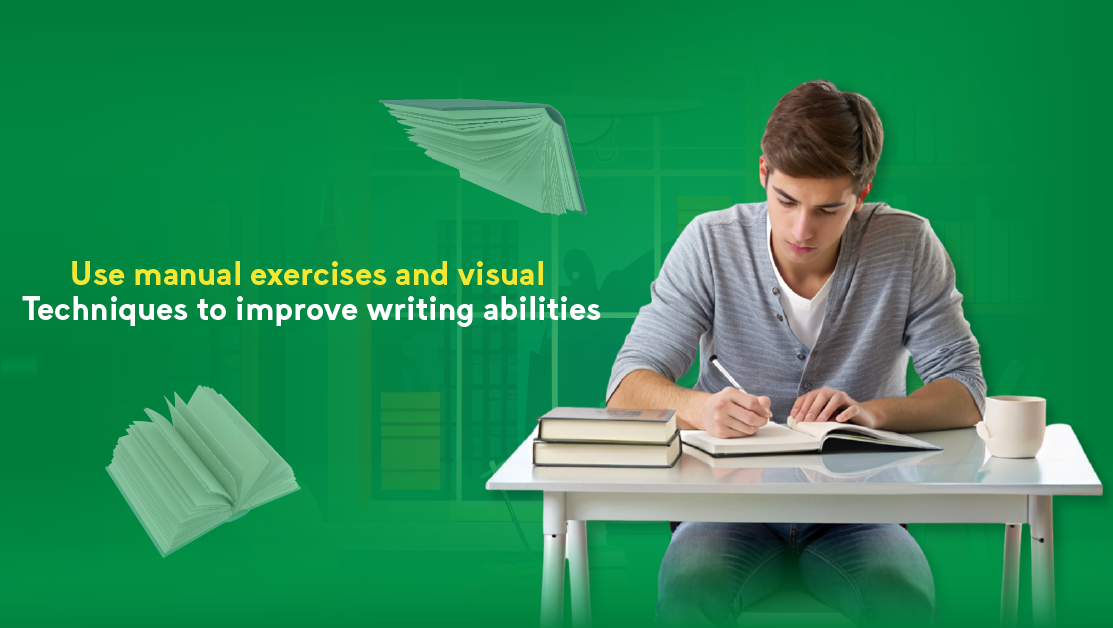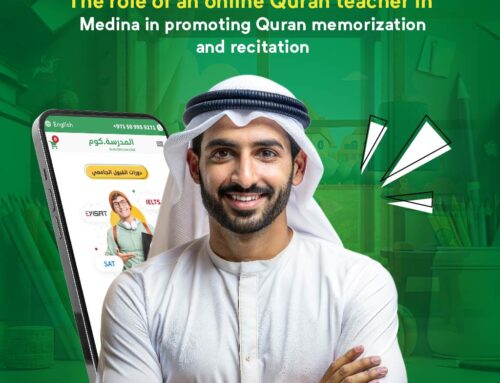
Writing is a multifaceted skill that blends creativity, clarity, and structure. For many, to improve writing abilities can be a daunting task. However, employing manual exercises and visual techniques can significantly enhance one’s proficiency in writing. These methods engage different parts of the brain and offer varied approaches to developing writing skills. This article delves into how manual exercises and visual techniques can be used to boost writing abilities.
The Importance of Writing Skills
Writing organizes thoughts, persuades, informs, and entertains. Essential for academic, professional, and creative purposes, strong writing skills improve idea articulation, boost confidence, and enhance overall communication. Proficiency ensures clarity in essays, business correspondence, and storytelling, supporting growth across various contexts.
Power of Writing:
- Writing is a fundamental medium of communication.
- It serves as a tool to organize thoughts clearly and systematically.
- Writing enables effective persuasion, influencing others through well-crafted arguments.
- It is a means to inform, conveying knowledge and information succinctly.
- Writing also entertains, engaging readers through storytelling and creative expression.
Essential Writing Proficiency:
- Strong writing skills are crucial for academic success, aiding in the articulation of complex ideas.
- Proficiency in writing enhances professional communication, facilitating clear and concise business correspondence.
- Creative expression through writing allows for the exploration and sharing of imaginative concepts.
- Good writing leads to better articulation of ideas, making them more understandable and impactful.
- Mastery of writing skills boosts an individual’s confidence in their ability to convey messages effectively.
Versatile Writing Skills:
- When you improve writing abilities, this contributes to the overall communication skills, enhancing verbal and non-verbal exchanges.
- Writing proficiency is invaluable in academic settings, supporting essay writing, research papers, and reports.
- In professional contexts, strong writing ensures clarity in emails, reports, proposals, and other business documents.
- For creative purposes, writing allows for the development of characters, plots, and settings, enriching storytelling.
- Ultimately, writing serves as a versatile tool, essential for personal, academic, and professional growth.
Manual Exercises to improve writing abilities
When you use manual trainings and exercises which are physical activities that engage the muscles and nerves involved in writing. These trainings and exercises not only improve the mechanics of writing but also aid cognitive processes associated with language and creativity.
Handwriting Practice:
- Handwriting practice, though seemingly old-fashioned in the digital age, remains a powerful tool to improve writing techniques and skills. The act of writing by hand can enhance fine motor skills, memory retention, and overall writing fluency.
- Enhance fine motor skills through regular handwriting practice sessions, as regular handwriting drills sharpen fine motor skills and boost writing proficiency.
- Improve writing fluency by dedicating time to handwriting exercises, as these exercises offer a timeless method to refine writing technique and skill.
- Strengthen memory retention through consistent handwritten note-taking, as consistent practice fosters improved writing fluidity.
Cursive Writing:
- Practicing cursive writing can improve the fluidity of handwriting and enhance muscle memory.
- Practice looping letters in cursive to improve handwriting fluidity.
- Mastering cursive strokes enhances muscle memory and writing speed.
- Regular cursive practice strengthens hand-eye coordination.
- When you use manual trainings to write in cursive it boosts fine motor skills and dexterity.
- Continuous cursive practice enhances legibility and writing efficiency.
Copywork:
- Copying passages from well-written texts helps internalize sentence structures, vocabulary, and stylistic elements.
- Copy passages from classic literature to absorb sentence structures and vocabulary.
- Practice copying well-written paragraphs to improve writing techniques and styles.
- Copy excerpts from your favorite authors to understand their unique writing styles.
- Replicate sentences from renowned authors to grasp diverse writing styles and techniques.
- Copy passages from literary works to internalize language nuances and rhetorical devices.
- Mimic paragraphs from professional writing to refine your own voice and composition skills.
Free Writing:
- Setting a timer and writing continuously without concern for grammar or structure can help overcome writer’s block and stimulate creative thinking.
- In order to improve writing abilities, use a timer to write without pause, fostering creativity and overcoming writer’s block.
Typing Practice:
- For those who predominantly use digital devices, improving typing speed and accuracy can significantly enhance writing efficiency.
Touch Typing Programs:
- After you use manual trainings tools like TypingClub or Keybr, this can help in improving typing speed and accuracy.
Timed Typing Drills:
- Regularly practicing timed typing exercises can enhance both speed and cognitive processing, which in turn improve writing abilities.
- Practice timed typing drills daily to boost speed and cognitive processing, enhancing overall writing skills.
Physical Exercises:
- Certain physical exercises can indirectly benefit writing by improving overall cognitive function and reducing stress, which can hinder writing performance.
Finger and Hand Exercises:
- Strengthening the muscles in the hands and fingers through exercises like squeezing a stress ball or playing with clay can improve handwriting endurance.
Visual Techniques for Writing Improvement
Visual techniques involve using visual aids and stimuli to enhance as well as improve writing abilities. These techniques engage the visual cortex, fostering a deeper understanding of narrative structures, enhancing descriptive abilities, and promoting creative thinking.
Mind Mapping:
- Mind mapping is a visual technique that helps organize thoughts and ideas. It involves creating a diagram that visually outlines information, showing relationships among pieces of the whole.
- In schools, students use mind maps to brainstorm ideas for essays and projects, visually organize concepts and connections, to improve writing abilities.
- University students utilize mind mapping to structure research papers, mapping out key points and supporting evidence.
- Teachers integrate mind mapping into lesson plans to illustrate complex topics and facilitate understanding among students.
- During group discussions, students collaborate on creating mind maps to synthesize information and identify patterns.
- In academic presentations, professors use mind maps as visual aids to outline key concepts and enhance comprehension among students.
Brainstorming:
- Mind maps are excellent for brainstorming, allowing writers to visually explore different angles of a topic.
- Writers use mind maps to brainstorm plot ideas for novels, exploring various character arcs and narrative twists to enhance writing abilities.
- When developing blog content, writers create mind maps to generate topic ideas and outline key points for each post.
- Playwrights utilize mind maps to brainstorm dialogue and plot developments for their scripts, ensuring coherence and depth, to improve writing abilities.
- Authors use mind maps to explore different themes and motifs for their stories, helping to enrich the overall narrative.
- Content creators brainstorm marketing strategies using mind maps, mapping out campaign ideas and target audience demographics.
Plotting Stories:
- If you want to be one of the creative writers, mind maps can help you deeply by plotting out storylines, character arcs, and themes in order to improve writing techniques.
- Authors use mind maps to plot out the twists and turns of mystery novels, ensuring a cohesive and engaging storyline.
- Fantasy writers utilize mind maps to create intricate worlds with detailed maps, cultures, and histories for their epic tales.
- Romance novelists plot out the development of relationships and conflicts using mind maps, ensuring a satisfying emotional arc for readers.
- Science fiction writers use mind maps to visualize futuristic technologies and societies, grounding their speculative worlds in plausible details.
- Historical fiction authors plot out the events and characters of different time periods using mind maps, ensuring accuracy and authenticity in their narratives.
- Thriller writers employ mind maps to strategically plan suspenseful plot twists and unexpected revelations, keeping readers on the edge of their seats.
- Young adult fiction authors use mind maps to map out the emotional journey of their protagonists, ensuring relatable and compelling character development throughout the story.
Visual Prompts:
- Using images, videos, and other visual stimuli can spark your creativity and improve writing abilities as well as skills.
- Poets use visual prompts such as photographs or paintings to inspire vivid imagery and sensory details in their poems, enriching the reader’s experience.
- Travel writers incorporate visual prompts like travel documentaries or virtual tours to evoke the sights, sounds, and atmosphere of different destinations in their writing.
- Content creators for social media platforms utilize visual prompts such as memes or infographics to craft engaging and shareable content that resonates with their audience.
- Journalists use visual prompts such as graphs or charts to present data and statistics in their articles, enhancing clarity and understanding for readers.
- Playwrights incorporate visual prompts like stage directions or set designs to convey mood and atmosphere in their scripts, enriching the audience’s theatrical experience.
Image Descriptions:
- Writing detailed descriptions of images can improve writing abilities, observational skills and descriptive language.
- Art critics write detailed descriptions of paintings, analyzing elements such as color, composition, and brushwork to enhance readers’ understanding and appreciation of the artwork.
- Travel bloggers describe photographs of landmarks and landscapes, using vivid language to transport readers to the destinations they’re writing about, fostering a sense of wanderlust.
- Copywriters craft compelling product descriptions for e-commerce websites, using detailed imagery to highlight features and benefits, enticing customers to make purchases.
- Environmental journalists describe photographs of natural disasters or environmental degradation, using evocative language to raise awareness and inspire action to address pressing environmental issues.
- Creative writers describe photographs from family albums or personal archives, using nostalgic imagery and emotive language to evoke memories and emotions, creating a sense of connection with readers.
Video Analysis:
- Watching a video and writing a summary or analysis as a way for you to use manual trainings can enhance your comprehension and synthesis skills.
- In schools, teachers help students in improving their writing by allowing them to analyze scenes from learning movies, then writing summaries and critiques to deepen their understanding of storytelling and editing techniques.
- Language learners watch videos in their target language, writing summaries and analyses to improve their comprehension and language skills, particularly vocabulary and grammar usage.
- Sports analysts watch game footage, writing summaries and analyses to dissect strategies, player performances, and key moments, providing insights for coaches, athletes, and fans.
- Marketing professionals analyze advertising campaigns, watching commercials and promotional videos to write summaries and critiques, evaluating effectiveness and identifying persuasive techniques.
- Professors use educational videos in the classroom, prompting university students to write summaries and analyses to reinforce their learning objectives, encourage their critical thinking, and assess their comprehension.
Storyboarding:
- Storyboarding involves sketching out scenes and events in a narrative sequence, much like a comic strip or a film storyboard. This technique is particularly useful for planning out complex narratives and visualizing story progression.
Scene Planning:
- For novelists and screenwriters, storyboarding helps in visualizing each scene, ensuring a coherent and engaging narrative flow.
Character Development:
- Creating visual representations of characters and their interactions can aid in developing more rounded and dynamic characters.
Graphic Organizers:
- Graphic organizers are visual tools that help structure information and ideas. They are particularly useful in academic writing and research.
Venn Diagrams:
- Useful for comparing and contrasting ideas or concepts in a creative way to improve writing techniques.
Flowcharts:
- Helpful in outlining processes, arguments, or steps in a narrative.
Combining Manual Exercises and Visual Techniques
The integration of manual exercises and visual techniques can create a comprehensive approach to improve writing abilities. By engaging different cognitive and physical processes, these methods complement each other, leading to a more robust development of writing skills.
Interactive Writing Workshops:
- Combining handwriting practice with mind mapping and storyboarding in a workshop setting can provide a holistic learning experience.
- If you want to use manual trainings, step into a realm of creativity and collaboration in interactive writing workshops, where the fusion of handwriting drills with mind mapping and storyboarding transforms learning into a dynamic and immersive adventure, fostering holistic growth and mastery of the written word.
- In the vibrant atmosphere of interactive writing workshops, participants embark on a journey where pen meets paper, ideas intertwine on mind maps, and narratives come to life through storyboards. This fusion of handwriting, visualization, and storytelling creates a dynamic space for exploration, collaboration, and boundless creativity to flourish.
Digital Tools:
- Utilizing digital tools that combine typing practice with visual prompts and mind mapping software can create and improve writing techniques in an engaging as well as effective way of practice.
- Embark on a writing adventure with innovative digital aids, seamlessly integrating typing drills, captivating visual cues, and intuitive mind mapping tools to refine your writing craft in a stimulating and efficient manner.
- Unlock your writing potential through a captivating fusion of digital resources, where typing exercises intertwine with vibrant visual cues and interactive mind mapping software, offering an engaging and transformative approach to honing your craft.
To improve writing abilities, it requires a multifaceted approach that includes both manual exercises and visual techniques. Handwriting and typing practice enhance the mechanical and cognitive aspects of writing, while visual techniques foster creativity and organization. By integrating these methods, writers can develop a more comprehensive skill set, leading to improved writing proficiency and greater confidence in their abilities. Embracing these techniques can transform the writing process into an engaging, enjoyable, and highly productive endeavor which are really in need.















